| Beta’s electric aircraft lands at Boeing Field, carrying a legacy of ‘firsts’
Oct. 29, 2025 at 10:00 am Updated Oct. 29, 2025 at 10:00 am
People are invited to take a closer look as BETA Technologies exhibits one of its fixed-wing all-electric aircraft at King County International Airport-Boeing Field on Tuesday, October 28, 2025, in Seattle. (Ken Lambert / The Seattle Times)
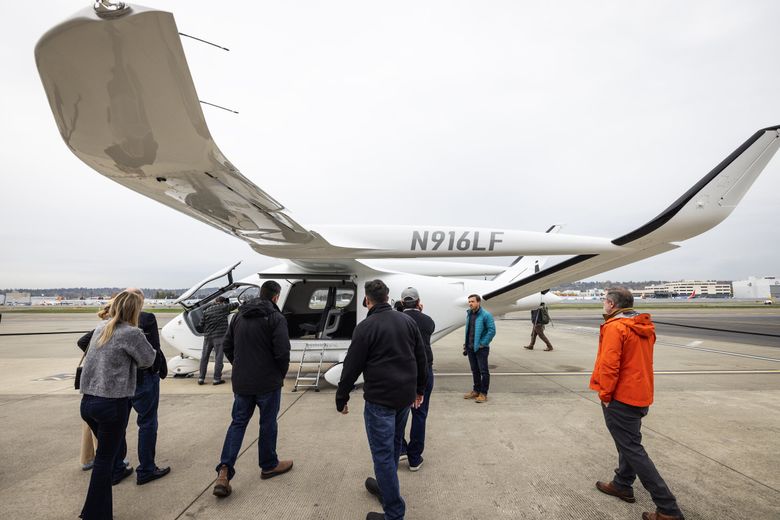
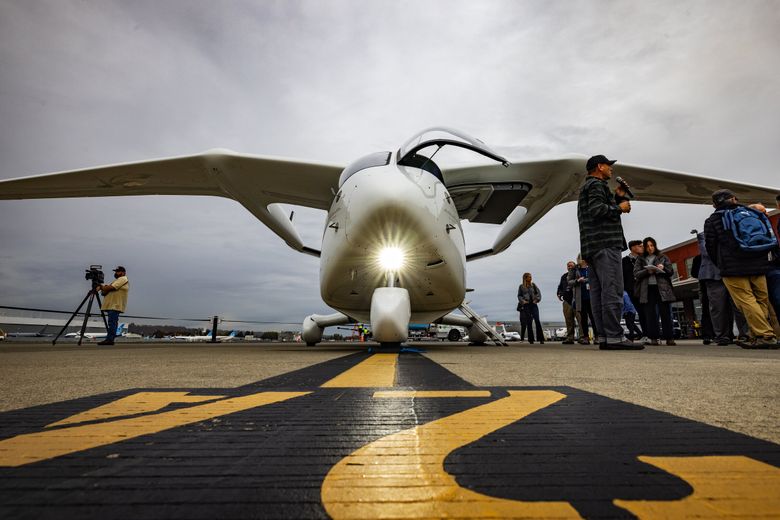
1 of 2 | People are invited to take a closer look as BETA Technologies exhibits one of its fixed-wing all-electric aircraft at King County International Airport-Boeing Field on Tuesday, October 28, 2025, in Seattle. (Ken Lambert / The Seattle Times)
By
Lauren Rosenblatt
Seattle Times business reporter
As air taxis creep closer to reality, Beta Technologies is touring its electric aircraft around the country.
The Vermont-based manufacturer is one of several companies working on electric vertical takeoff and landing, or eVTOL, aircraft, part of a broad movement to find more efficient and environmentally sustainable options for air travel.
eVTOLs are battery operated and take off like a helicopter. The companies building them promise lower costs and reduced carbon emissions but have yet to receive certification from the Federal Aviation Administration to fly with passengers.
Beta, hoping to seek some regulatory approval as soon as next year, is competing with California-based Archer Aviation, which has promised air taxis at the 2028 Los Angeles Olympics, and Boeing-backed Wisk Aero, which plans to be certified and flying in the U.S. by 2030 and in Australia by the 2032 Olympics held there.
Joby Aviation, another California-based competitor, has partnered with Delta Air Lines to bring eVTOLs to commercial service and to the Department of Defense for military applications.
Beta is working on an eVTOL but, in an effort to speed regulatory approval, it is also developing a “conventional” takeoff and landing aircraft, a smaller, electric version of traditional commercial planes.
In an aviation milestone, the Beta Technologies plane that arrived Tuesday became the first electric passenger aircraft to land at Boeing Field. (Ken Lambert / The Seattle Times)
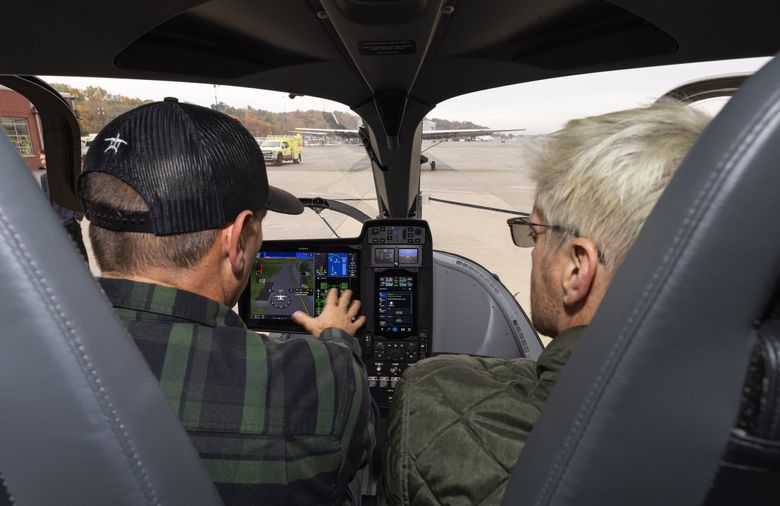
In an aviation milestone, the Beta Technologies plane that arrived Tuesday became the first electric passenger aircraft to land at Boeing Field. (Ken Lambert / The Seattle Times)
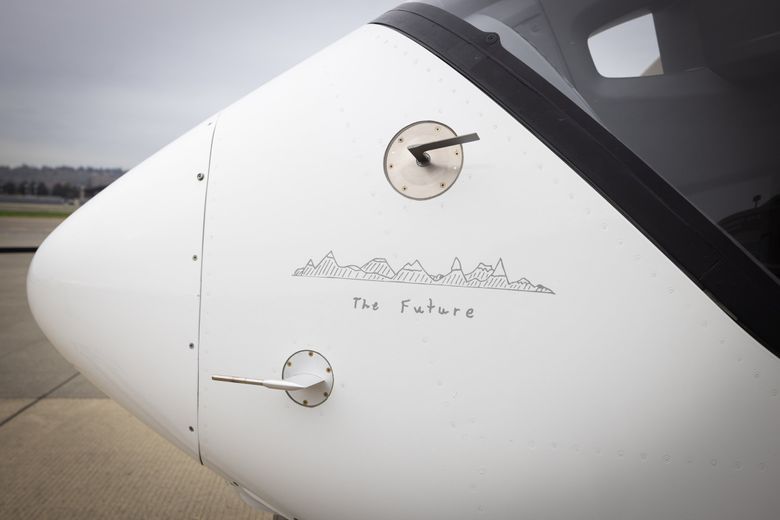
A Beta Technologies fixed-wing all-electric aircraft arrived Tuesday at Boeing Field and will depart Thursday. (Ken Lambert / The Seattle Times)
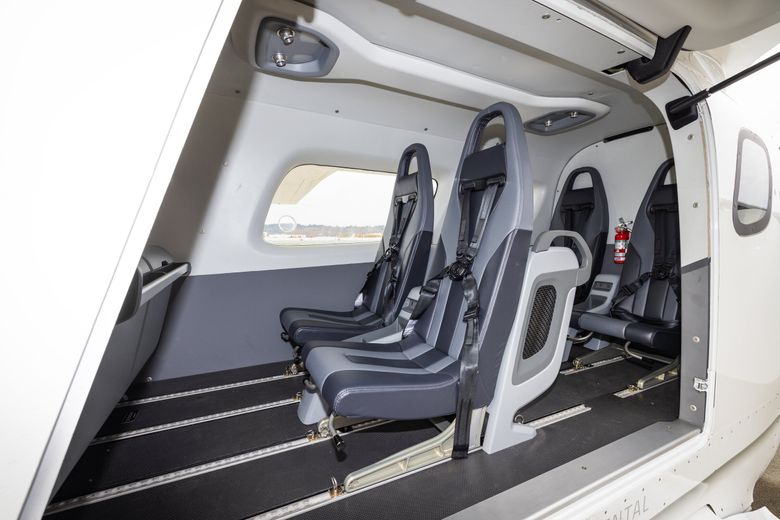
The all-electric aircraft that Beta brought to Seattle carries a pilot, five passengers and luggage. (Ken Lambert / The Seattle Times)
As it gears up to seek FAA certification as soon as next year, Beta is taking its conventional model around the country, introducing it to regional airports and government officials.
On Tuesday, it stopped at Seattle’s Boeing Field, carrying forward the region’s legacy of aviation “firsts,” said Dave Decoteau, deputy director of King County International Airport-Boeing Field.
“We’re also leading the way here in environmental sustainability, which falls right in line with Beta’s technology,” Decoteau said, pointing to the airport’s investment in an electric sweeper and a hybrid rescue vehicle. “Today, we build on that proud legacy.”
Beta’s cargo electric plane visited Boeing Field about a month ago, Decoteau said. The passenger version on display Tuesday is the first electric passenger aircraft to land at the airport.
When it takes off again on Thursday, it will be the first aircraft to use Boeing Field’s newly updated short runway. The runway has been closed since March for the $27 million upgrade.
Meeting ALIA
Beta’s electric plane, named ALIA, can carry five passengers, a pilot and luggage. It can fly up to 386 miles, traveling at a speed of 176 mph.
Beta estimates its eVTOL model could reduce operating costs by 74%, compared to a traditional helicopter. Its conventional model, or CTOL, could trim costs by 42% compared to traditional aircraft, the company says.

Beta Technologies’ all-electric passenger plane is powered by one electric motor and one five-blade propeller. (Ken Lambert / The Seattle Times)
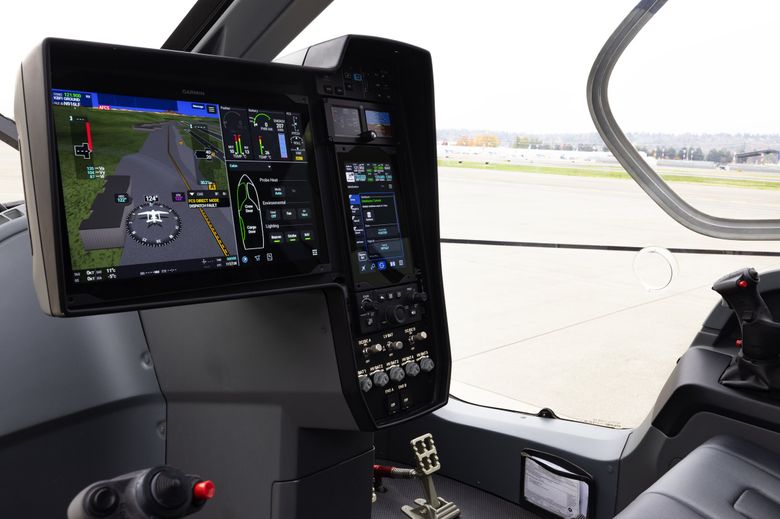
The pilot’s display on the flight deck is seen as BETA Technologies exhibits one of its fixed-wing all-electric aircraft at King County International Airport-Boeing Field on Tuesday in Seattle. (Ken Lambert / The Seattle Times)
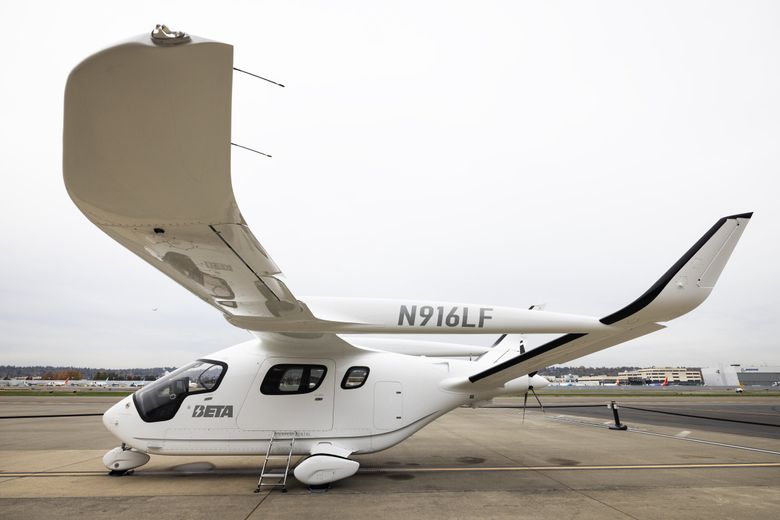
Beta Technologies is working on an electric plane that takes off and lands vertically, similar to a helicopter, but also this more conventional passenger craft. (Ken Lambert / The Seattle Times)
The conventional takeoff plane is powered by one electric motor and one five-blade propeller. The VTOL aircraft has four additional lift motors, and four two-blade lift propellers.
Beta and its competitors have for years made ambitious promises about the future of electric aircraft. So far, none have been certified by the FAA and many have pushed back their own estimates for entry into service.
This summer, those companies got a boost in confidence from the Trump administration when it announced a plan to streamline the certification process and get electric aircraft in the skies.
Beta has four conventional aircraft flying today and one VTOL, as well as two more VTOLs on the production floor. It is hoping to receive FAA certification by late 2026 or early 2027.
With a partnership with UPS and investment from Amazon’s Climate Pledge fund, Beta is first focused on transporting cargo, then will turn to passenger service. It’s also working with medical technology and aviation companies to one day use its aircraft for organ and tissue deliveries.
In June, regional carrier Republic Airways said it would purchase one of Beta’s conventional takeoff aircraft for crew training. In July, the FAA certified Beta’s five-blade propeller, which it developed with Ohio-based Hartzell Propeller.
The plane that visited Boeing Field on Tuesday is about to mark its first birthday; it rolled off Beta’s production line in Burlington, Vermont, last Nov. 7, said Chris Caputo, the director of flight operations. It has flown 475 hours and covered about 30,000 miles.
“To me, having been in aerospace for 35 years now … the reality of it is really mind-blowing to me,” Caputo said.
Most Read Business StoriesInvesting in Washington
Beta has three options for charging its electric aircraft, Caputo said Tuesday: a network of chargers waiting at airports around the country; portable chargers that fit in the back of the plane and plug in wherever it lands; and a mobile charging truck that will follow the aircraft on the ground.
Beta has more than 50 airports in its charging network, including some internationally.
Washington is not on that list.
Thea Wurzburg, who handles state and local government relations for Beta, said the company doesn’t yet have any infrastructure in Washington. But Beta has been in conversations with airports in the region and the state’s Department of Transportation.
“The lowest-hanging fruit is getting the charging infrastructure in place,” Wurzburg said, adding that the funding for those projects is often a partnership between Beta and other stakeholders. Some states have invested in the company and the infrastructure, she said.
In Washington, Beta hasn’t been in touch with Seattle-Tacoma International Airport, Wurzburg said. Though it has landed in crowded hub airports, Beta is first targeting smaller, regional airports for its charging network where there is more time and space to experiment, like Boeing Field.
Ann Richart, aviation director for Washington state Department of Transportation who attended Tuesday’s event, said her department’s role is to prepare the infrastructure behind the scenes while innovators like Beta prepare the technology.

Ann Richart, Aviation Director, Washington State Department of Transportation, speaks at an event where BETA Technologies exhibits one of its fixed-wing all-electric aircraft at King County International... (Ken Lambert / The Seattle Times)
WSDOT isn’t in charge of allocating the state’s funds, for the most part, Richart said, and wouldn’t decide if Washington partners with Beta or another electric aircraft startup.
As Richart works behind the scenes, she said she’s “looking at the industry as a whole, not just one or two manufacturers.” When she meets with companies like Beta, she’s most interested in hearing about their “use cases,” to determine if it will fit Washington’s needs.
Richart has some concerns with electric aircraft, for instance: Electricity isn’t a totally green solution, and it isn’t foolproof.
She wants to make airports “mini electric grids” that can operate on their own if they need to. At the same time, she wants to invest in hydrogen-powered aircraft, and assess the state’s existing airports to ensure there are not any “gaps” where emergency response couldn’t easily reach an airport in the event of a natural disaster.

The recharge port is seen at right, as BETA Technologies exhibits one of its fixed-wing all-electric aircraft. (Ken Lambert / The Seattle Times)
State Rep. Jake Fey, a Democrat representing the 27th District who also attended Tuesday’s showcase, said Washington won’t have the resources to be a “big investor” in electric aircraft companies — but it can create an environment that attracts them through tax breaks and other incentives.
“It’s something we need to facilitate,” he said. “It helps us not only with mobility but also moving to a fuel system that doesn’t have carbon emissions.”
“We’ve been working on looking at how we’re going to deal with growth and demand in air travel,” Fey continued, referencing the crowding at Sea-Tac Airport that is already threatening to delay flights as planes move through the crowded airspace.
Electric aircraft like Beta’s ALIA “isn’t the single answer,” he said. But it could be “one of the answers.”
Lauren Rosenblatt: 206-464-2927 or lrosenblatt@seattletimes.com. Lauren Rosenblatt is a Seattle Times business reporter covering Boeing and the aerospace industry.
seattletimes.com |
|














